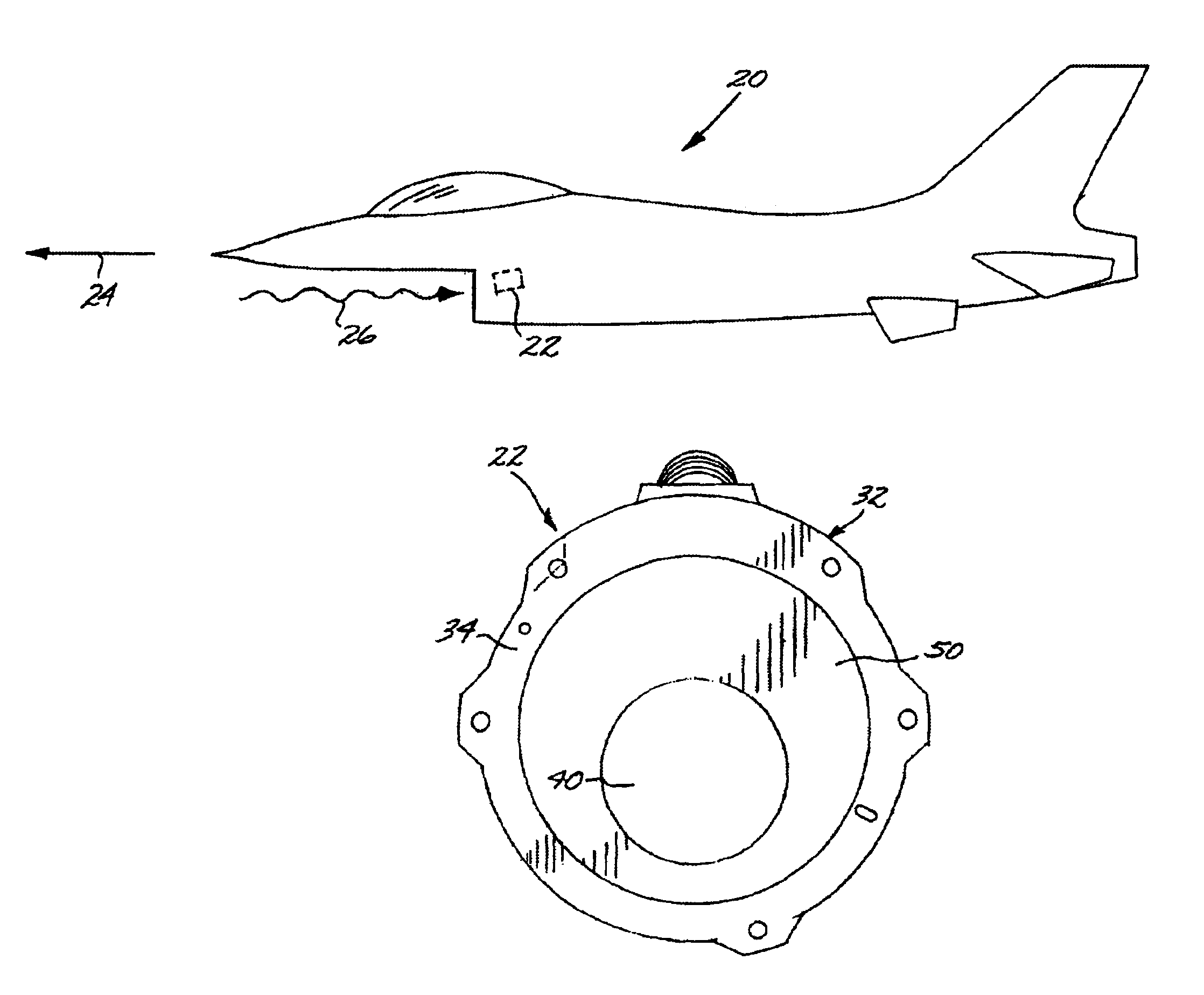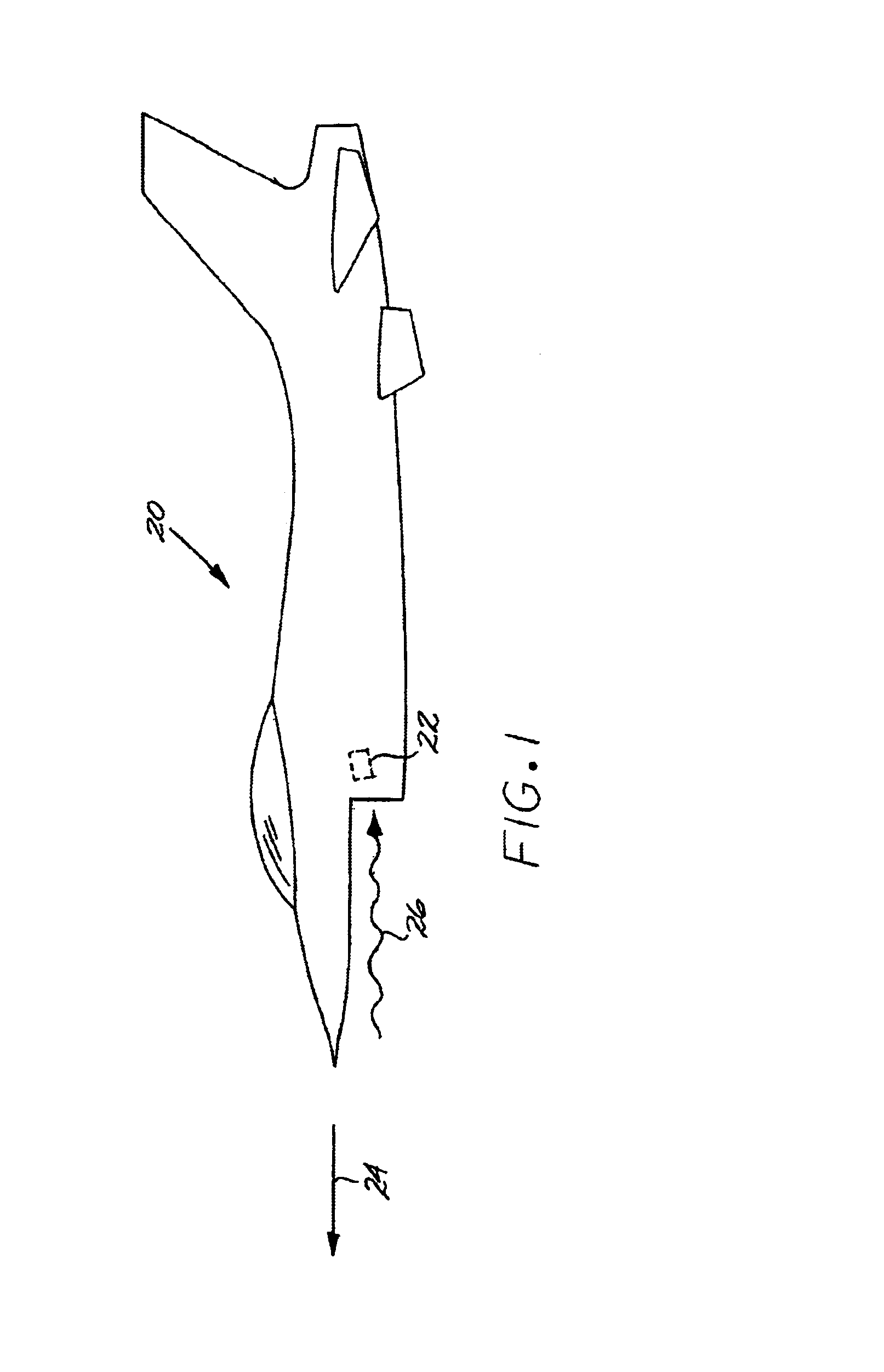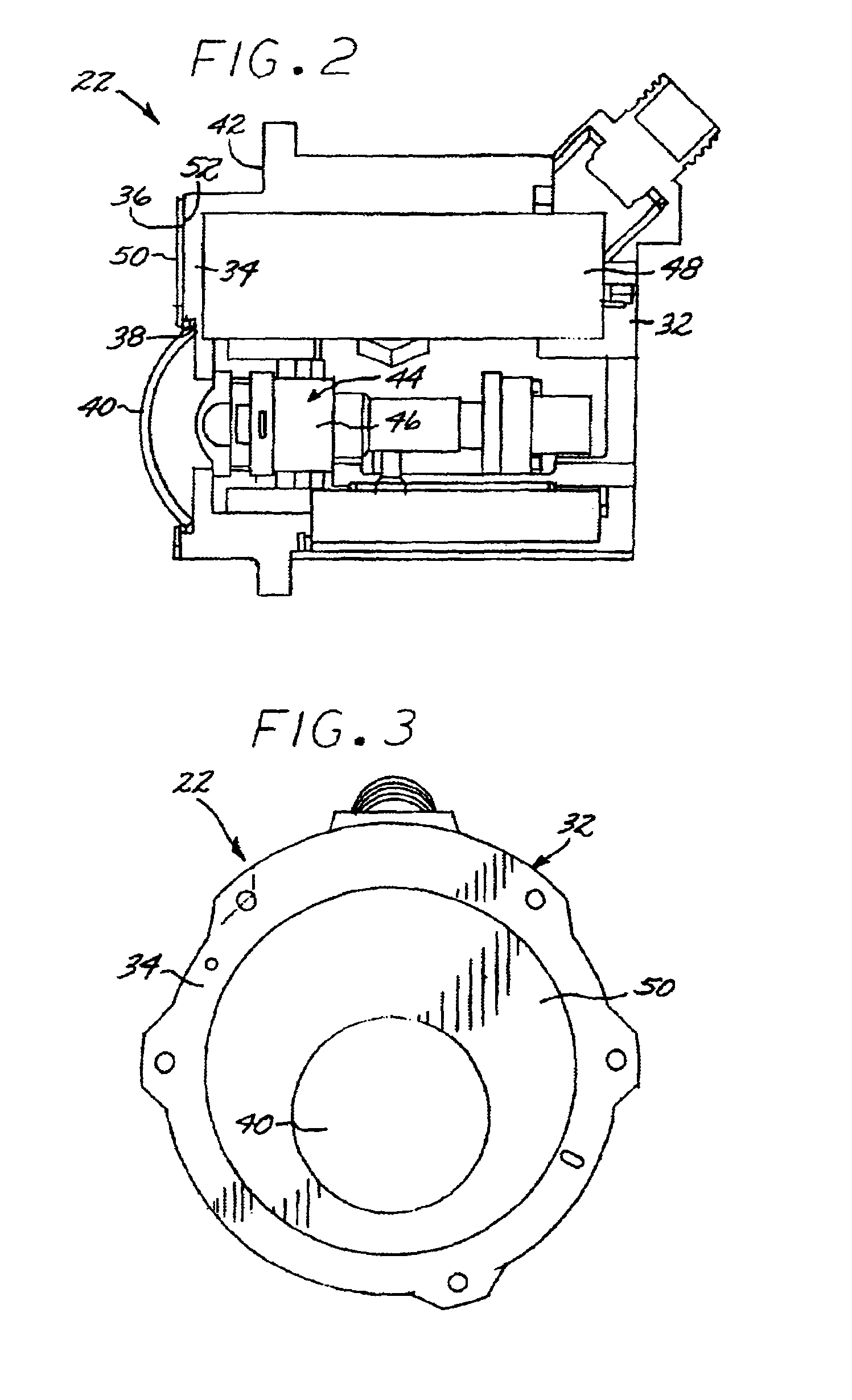Sensor system and method for sensing in an elevated-temperature environment, with protection against external heating
- Summary
- Abstract
- Description
- Claims
- Application Information
AI Technical Summary
Benefits of technology
Problems solved by technology
Method used
Image
Examples
Embodiment Construction
[0022]FIG. 1 schematically depicts an aircraft 20 (with the wing not shown so as not to obscure pertinent structure), and a preferred embodiment of a sensor system 22 affixed to the aircraft 20. The aircraft 20 flies in a direction of flight 24. The aircraft 20 may be a manned aircraft or an unmanned aircraft such as a missile. The aircraft 20 may be a military or a civilian aircraft. No limitation is known on the types of aircraft 20 that may be used. In the embodiment of FIG. 1, the sensor system 22 is fixed in a forward-facing orientation. That is, the sensor system 22 faces in the direction of flight 24 of the aircraft 20, so that it receives an input signal 26 generally from ahead of the aircraft 20.
[0023]FIGS. 2–4 illustrate the sensor system 22 in greater detail and in various views. The sensor system 22 is comprised largely of a sensor housing 30 having an exterior wall 32 that both supports and protects the internal components. The exterior wall 32 extends around most of th...
PUM
 Login to View More
Login to View More Abstract
Description
Claims
Application Information
 Login to View More
Login to View More - R&D
- Intellectual Property
- Life Sciences
- Materials
- Tech Scout
- Unparalleled Data Quality
- Higher Quality Content
- 60% Fewer Hallucinations
Browse by: Latest US Patents, China's latest patents, Technical Efficacy Thesaurus, Application Domain, Technology Topic, Popular Technical Reports.
© 2025 PatSnap. All rights reserved.Legal|Privacy policy|Modern Slavery Act Transparency Statement|Sitemap|About US| Contact US: help@patsnap.com



